Is it a trend, an obsession or a revolt against all things digital? From classic rock, to old Hindi film numbers, Gen Z is all ears for the retro aesthetic
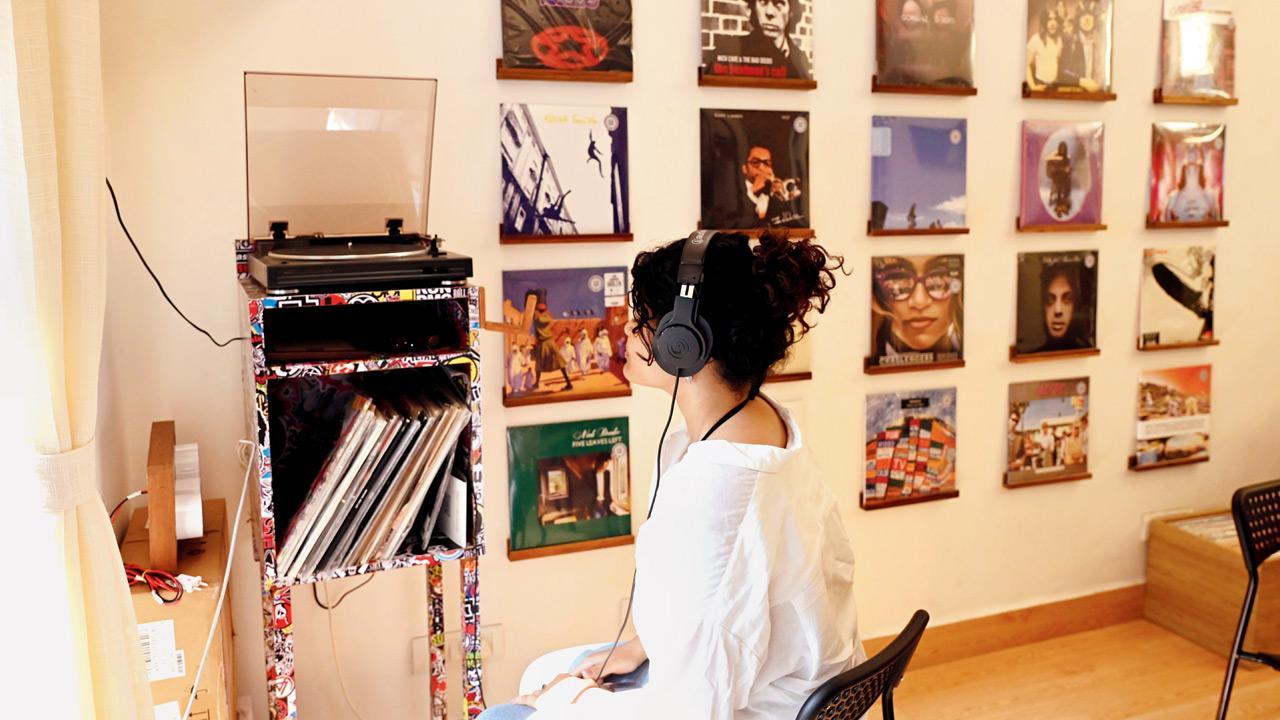
The re-opening of The Revolver Club in Mahim comes as Gen Z is increasingly adopting the retro aesthetic wholesale—from room decor with vinyl records and Walkman replicas, to music videos soaked in VHS filters and ’80s-style fonts. PIC/KIRTI SURVE PARADE
At karaoke nights across Mumbai, an unexpected trend is emerging. Between renditions of Kendrick Lamar and Taylor Swift, it’s not uncommon to hear the opening chords of Bohemian Rhapsody, Mamma Mia, or Billie Jean. Even more surprising is who’s singing them—20-somethings, eyes shut, belting out the lyrics like they’ve lived them.
“We started the pub with the ethos of preserving the culture of pure retro and rock bars in Mumbai,” says Rossi Shetty, co-owner of Road House Bluez, which has branches in Andheri and Bandra and has karaoke nights every day. “So seeing younger people sing songs from the ’70s, ’80s, and ’90s—across disco, pop, metal, and rock—is not just nostalgic, it’s fulfilling.”
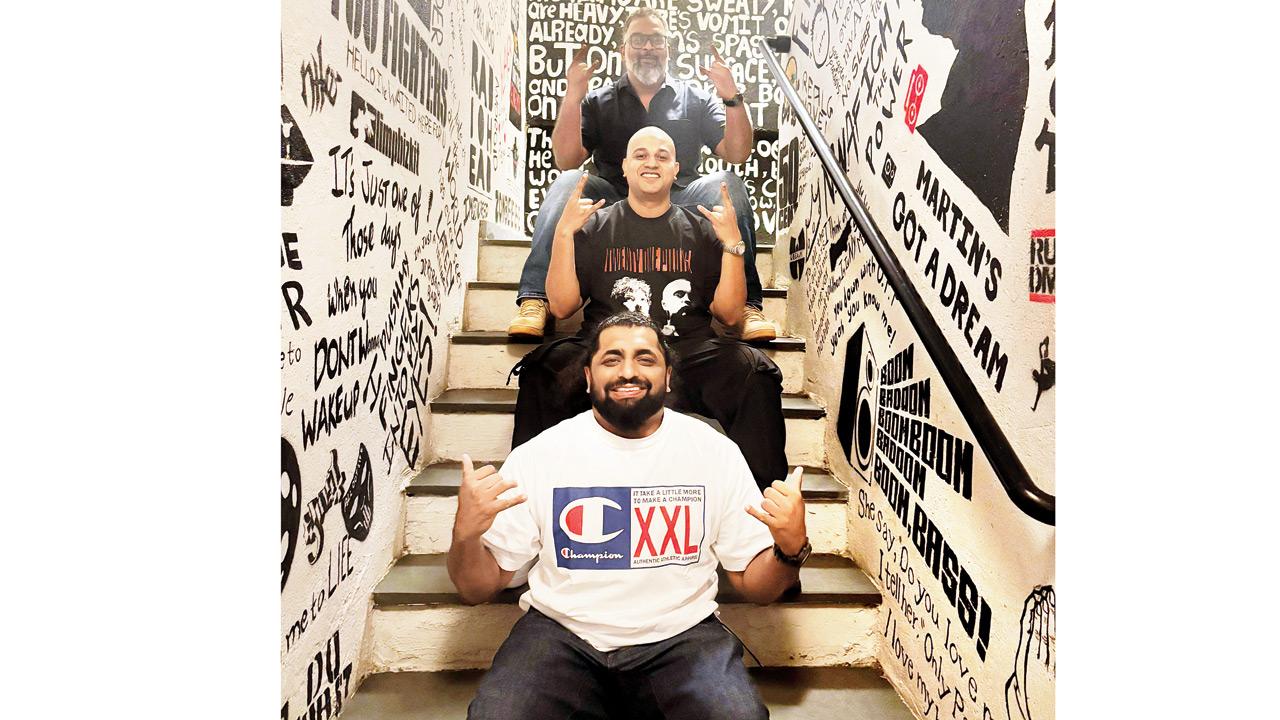
Mayur Shetty (top), Ravish Shetty (middle), and Rossi Shetty (bottom) opened Road House Bluez with the hope of preserving pure retro-rock pub culture in Mumbai. PIC COURTESY/Rossi Shetty
According to Spotify’s 2024 report, Gen Z averages 2.2 hours of listening time per day on the platform. In fact, during the pandemic’s onset in April 2020, there was a 54 per cent spike in nostalgic playlist creation and a notable uptick in streams of songs from the ’50s to the ’80s. For this generation, who grew up with streaming but lived through global uncertainty, the warm familiarity of older music offers an emotional anchor.
Twenty-year-old Akshita Maheshwari recalls growing up with her father’s Saregama Caravan. “It played all the time. My mom still has an inbuilt speaker at home, and Kishore Kumar is on loop.” She adds “I’m very big on Kishore Kumar and Mohammed Rafi. Of course, there’s also Asha Bhosle and Lata Mangeshkar. But Kishore Kumar would probably be my favourite.”
Jagjit Singh, she says, is “a little too sad—like, that man has been through a lot,” but she swears by his lyricism. “When he sings Hontho se chhoo lo tum, mera geet amar kar do, I get goosebumps. What do you mean that’s a real line, written by a real person for someone he loves? It’s so poetic that it’s astounding,” she says with a laugh.
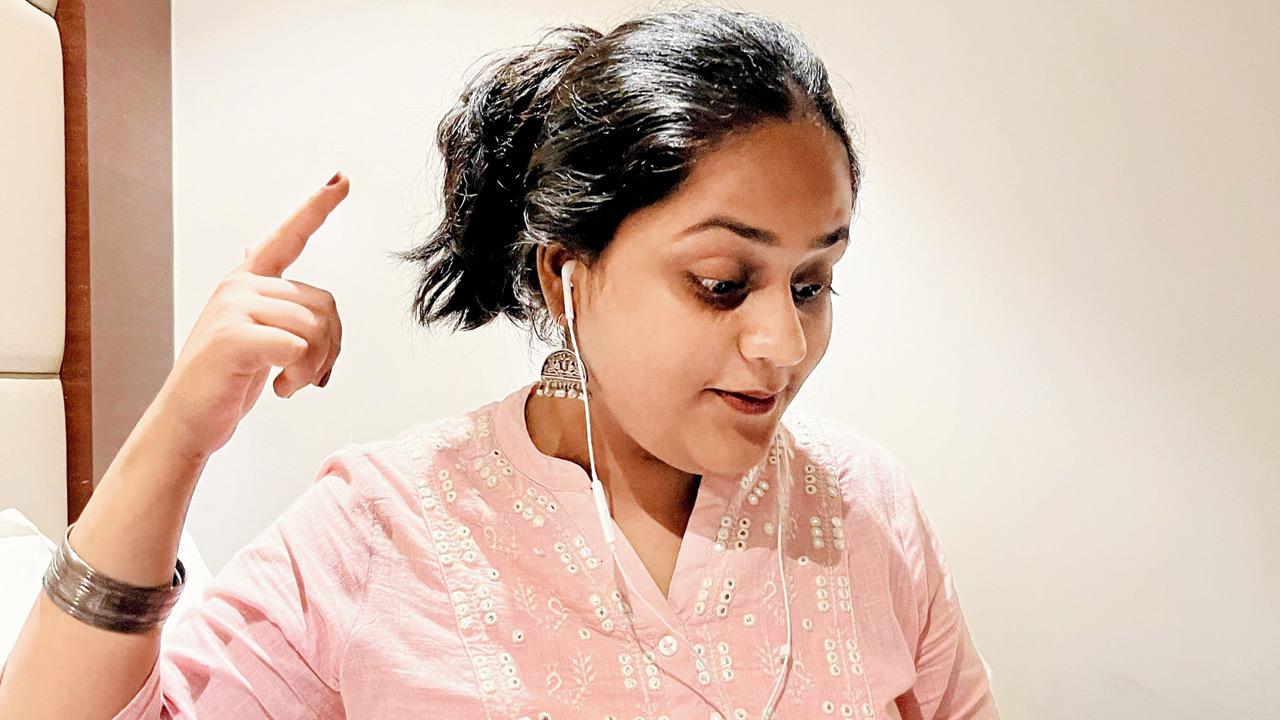
Lyrics are very important for Akshita Maheshwari, who can be found listening to old Bollywood songs at any time of the day. Today’s music, according to her, lacks lyricism that creates an impact and tells a story. PIC COURTESY/Akshita Maheshwari
“That’s my big problem with music today—the lack of lyricism that creates an impact and tells a story. Lyrics are very important to me. Even if the beat is basic or the music is cloudy, if the lyrics are good—if I hear a line and think, ‘Oh my god, what a thing to think’—I’m hooked,” she adds.
This sentiment echoes in the research of Rishi Pinjani, a third-year student at Jai Hind College, who studied the intergenerational transmission of music preferences. “Through a sample of 125 people, most of them from the 18–24 age group, my study found that 83.2 per cent revisit old songs for emotional and nostalgic value. Music isn’t just inherited—it’s woven into personal experience.”
The retro obsession isn’t just about sound. A search for “retro” on any music streaming platform pulls up thousands of curated playlists. But on social media, the movement goes deeper. Gen Z has adopted the retro aesthetic wholesale—from room decor with vinyl records and Walkman replicas, to music videos soaked in VHS filters and ’80s-style fonts. Bold colours, vintage typography, and analogue charm are everywhere. “I love the retro aesthetic,” says Pinjani. “There’s something timeless about it and unlike most trends, this one doesn’t feel like it’s trying too hard.”
This embrace of retro extends to indie music too, where artists are consciously drawing from older eras to create something new. Singer Shrea Suresh, 25, who performs as Shrae, recently released her EP Ajab Si Gypsy in collaboration with duo Donanki consisting of Parth Mundhe aka Pakeezah, and Vedant Deshmukh. “Vedant is a songwriter, and we both wanted to find a middle ground to collaborate,” says Shrae. “We asked ourselves what excites us both, and the answer was old-school music. I love jazz, and that led us to experiment with this disco-retro-pop sound.”
Their creative sessions soon became a deep dive into musical nostalgia, sifting through decades of classics to find a tone that felt both timeless and timely. It was during this process that they stumbled upon a shared influence that would anchor their collaboration: the trailblazing pop of Nazia Hassan. “Her music has this unique place for us—it’s pop, but not the kind we hear today. It’s ’80s pop that still feels fresh,” notes Deshmukh.
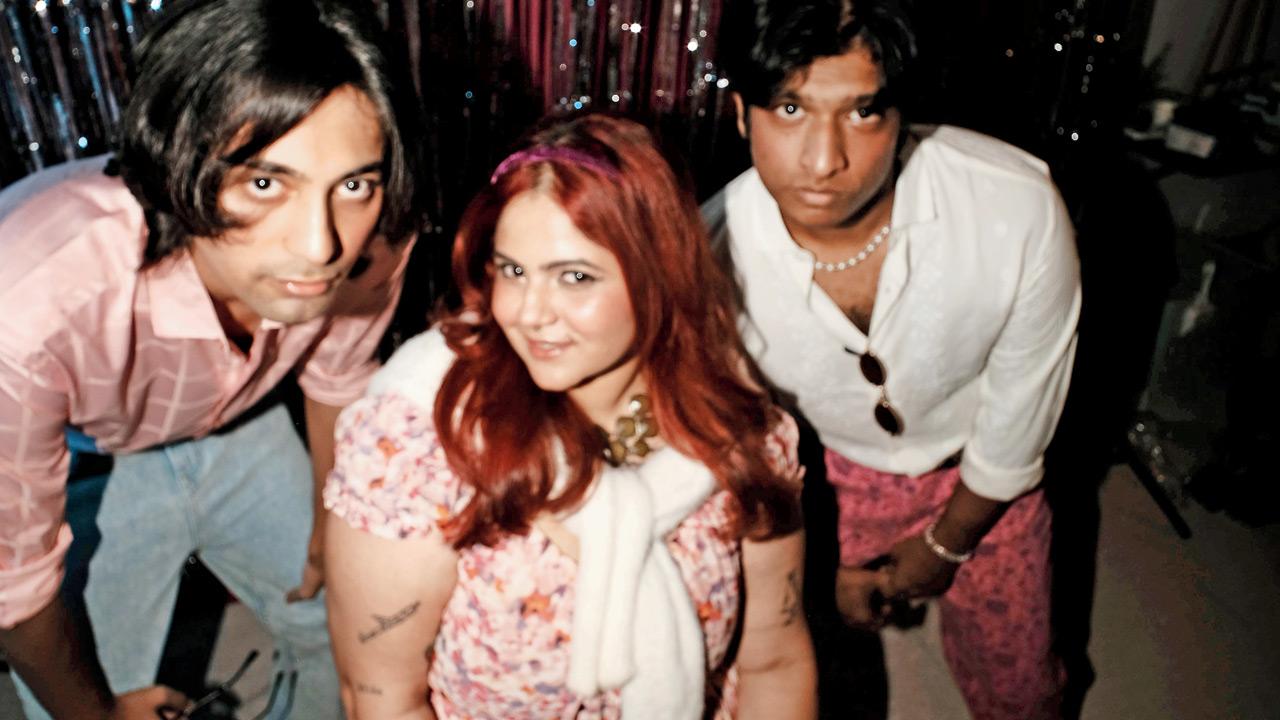
For Shrea Suresh (centre) and duo Donanki consisting of Vedant Deshmukh (left) and Parth Mundhe (right)—their latest EP Ajab Si Gypsy was influenced by icon Nazia Hassan—giving birth to their disco-retro-pop sound. PIC COURTESY/Shrea Suresh
Fuelled by that discovery, they began crafting Ajab si Gypsy. “We decided to do something nostalgic that still holds up in the current pop culture space,” says Shrae. “Using old-school composition and production techniques but making them relevant today through the lyrics,” adds Deshmukh.
For Robica Chaudhuri—who goes by RORO—music has always been shaped by the sounds of her childhood. Her upcoming single Buri Aadatein, set to release in the first week of May, blends pop with garage & electronic influences. But while the production feels modern, the lyrics and melody are rooted in the poetic storytelling of retro music. “Buri Aadatein was born after I came to terms with the fact that being vulnerable is okay,” she shares.
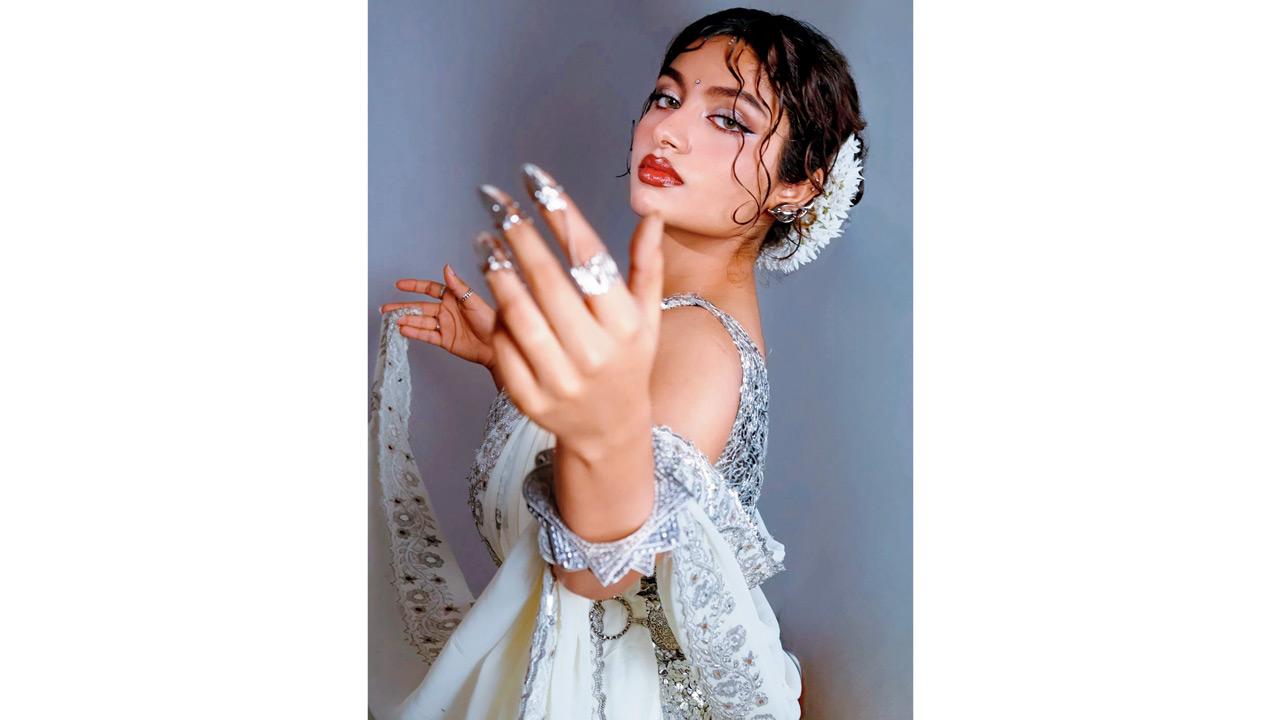
While the production of Robica Chaudhuri’s upcoming single Buri Aadatein feels modern with pop, garage & electronic influences, the lyrics, she notes, are rooted in the poetic storytelling of retro music. PIC COURTESY/Robica Chaudhuri
“The song is about unspoken love between two people who clearly feel something for each other but never say it out loud. They both sense the connection, but hold back. For me, it was about this one guy I really liked, but I was sure that he felt the same way. You know how it goes—you start off as friends, and then the tension slowly builds. You catch yourself admiring them from a distance, picking up on their little habits, listening more closely when they talk. And as the feelings grow, so does the silence.
For RORO, that quiet, emotional spiral is inherently poetic—and painfully relevant. “The problem today is that people don’t communicate—because keeping our feelings inside to protect ourselves has become a habit we’ve all somehow picked up. So we just sit with them and overthink. And that itself becomes a buri aadat,” she explains. “So with this song, I wanted to capture what it feels like to have a crush in today’s world and express it through my own musical style.”
While many critics of modern music complain about the lack of authenticity, soul and depth in songs, Maheshwari notes: “There’s always been music that has not struck a chord with audiences, even back in the day. But now it feels like it’s mostly just that kind of music. That shift has a lot to do with the algorithmification of music. And songs need to be repetitive and danceable so they can go viral.”
However, authenticity in music today is being shot down by the bullets of virality and industry norms, leaving indie artistes in a dilemma. RORO, like many others, is concerned by the virality-first nature of today’s music. “More often that not, major labels look for formula. Not sound, not skill. Just what can be replicated.”
Karan Jhaveri—who goes by the stage name Tallz—a composer and music producer behind soundtracks for OTT shows like Gyaarah Gyaarah, Showtime, and Bad Cop, agrees. “People today chase virality. You hear one hit, and suddenly everyone’s making the same kind of song. I do things differently. I want to build a loyal audience by staying true to my sound. Sure, virality helps—but it’s fleeting. One viral moment and then silence. Longevity comes from consistency and maintaining your own identity.”
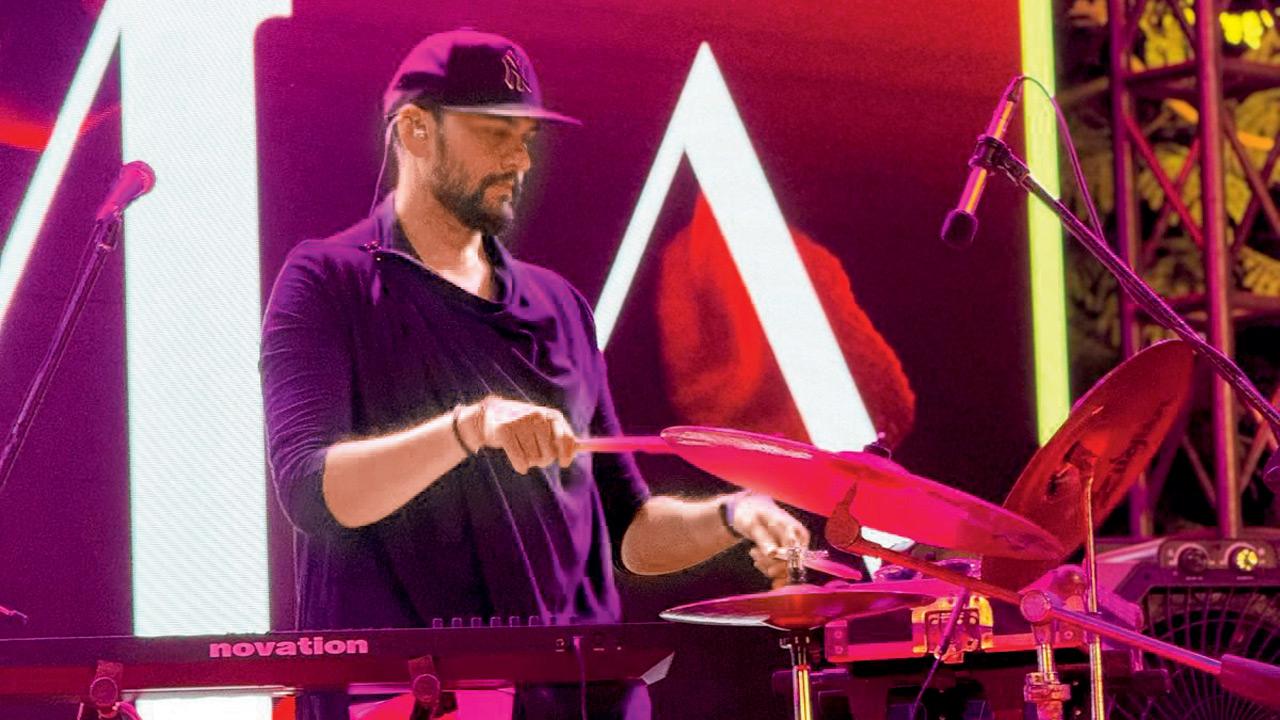
Karan Jhaveri, who goes by the stage name Tallz, believes that music from the ’80s and ’90s had more soul primarily because composers back then weren’t trying to replicate tried and tested formulas of virality—they were telling their own stories. PIC COURTESY/Karan Jhaveri
Tallz, who also plays keyboard in a retro cover band called Raaga Magic, sees this Gen Z shift as a return to roots. “They say music from the ’80s and ’90s had more soul. I believe it. Composers back then weren’t trying to replicate—they were telling their own stories.”
For musicians like Donanki, this desire for something less minimal and more textured was key to their sound. “One of the big reasons we wanted to explore a retro sound is because we’ve all been kind of bored with the minimalism in today’s Indian music. There’s nothing wrong with minimalism, but we were looking for something with more character and grit—something funkier and fuller,” notes Deshmukh.
In Shrae’s opinion, the indie music space has been stuck in a loop for far too long. “The whole ‘sad boy with a guitar’ vibe has dominated the scene for the last few years, and it’s just not something we as artistes connect with, and so we do not want to replicate that sound, even if it may be one of the industry norms,” she remarks.
That’s not to say modern music has lost its relevance. In fact, it’s quite the opposite. “The rap scene in India has exploded over the last two or three years,” says Maheshwari. She cites the example of the song Raat Ki Rani by Seedhe Maut—it has a retro vibe that makes one think it was sampled from an old track. But it wasn’t. The song was sampled around an original mix by composer Ishaan Chhabra, with lyrics by Dhruv Goel and vocals by Shaheen Salamani. “The part that sounds retro is what’s gone viral,” she notes.
This isn’t an isolated example. There is a growing trend of sampling or mimicking old-school sounds everywhere—from Tesher’s Bole Chudiyan remix in the song Young Shahrukh to lo-fi takes on ’90s Bollywood hits. “A lot of new songs are tapping into retro beats or melodies, and that’s what listeners instantly connect with. It gives the track recall value—it works great for Instagram transitions and resonates across generations. I can play it for my mom, and she’ll vibe with it because it sounds familiar.”
 Subscribe today by clicking the link and stay updated with the latest news!" Click here!
Subscribe today by clicking the link and stay updated with the latest news!" Click here!








